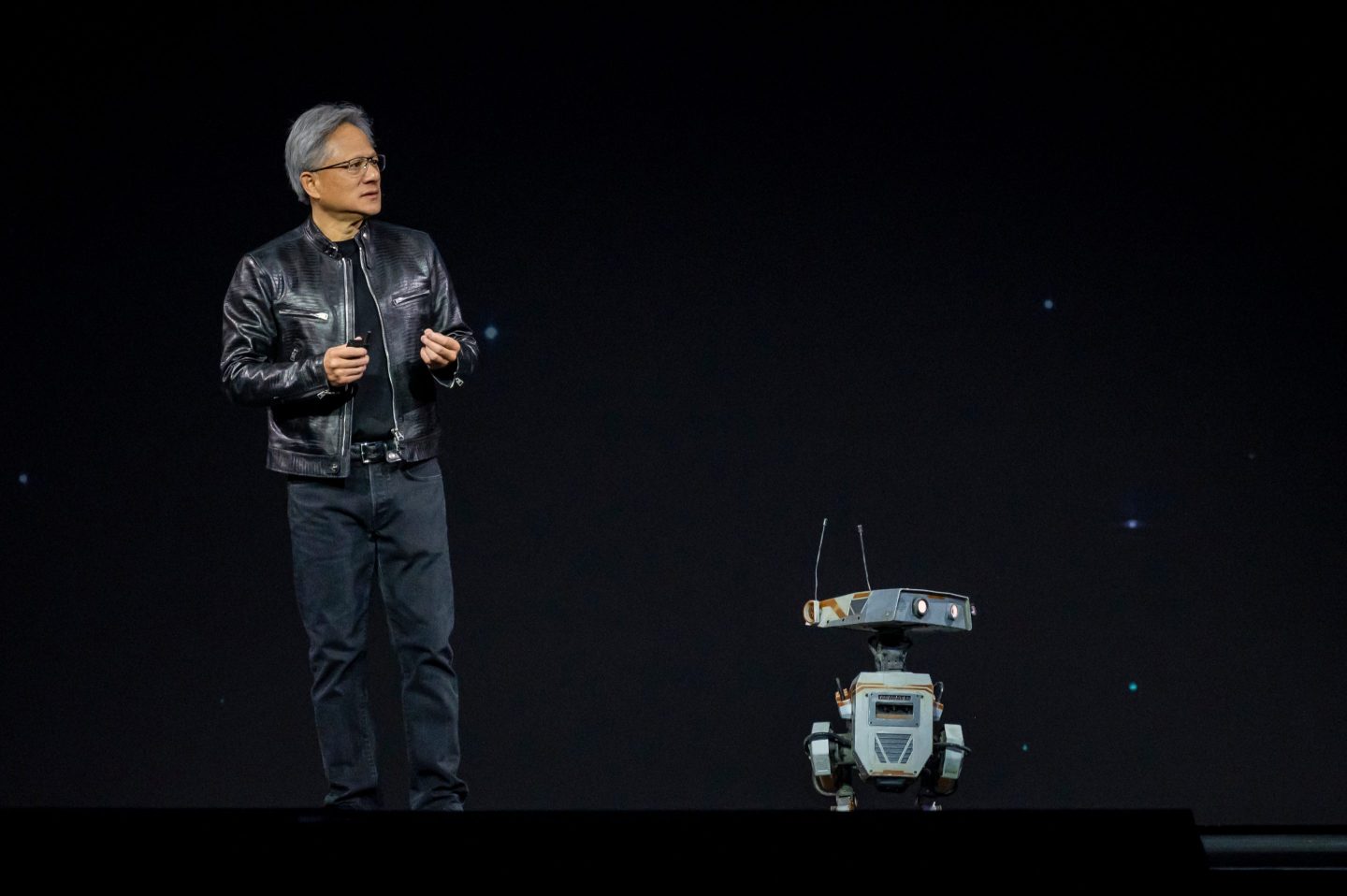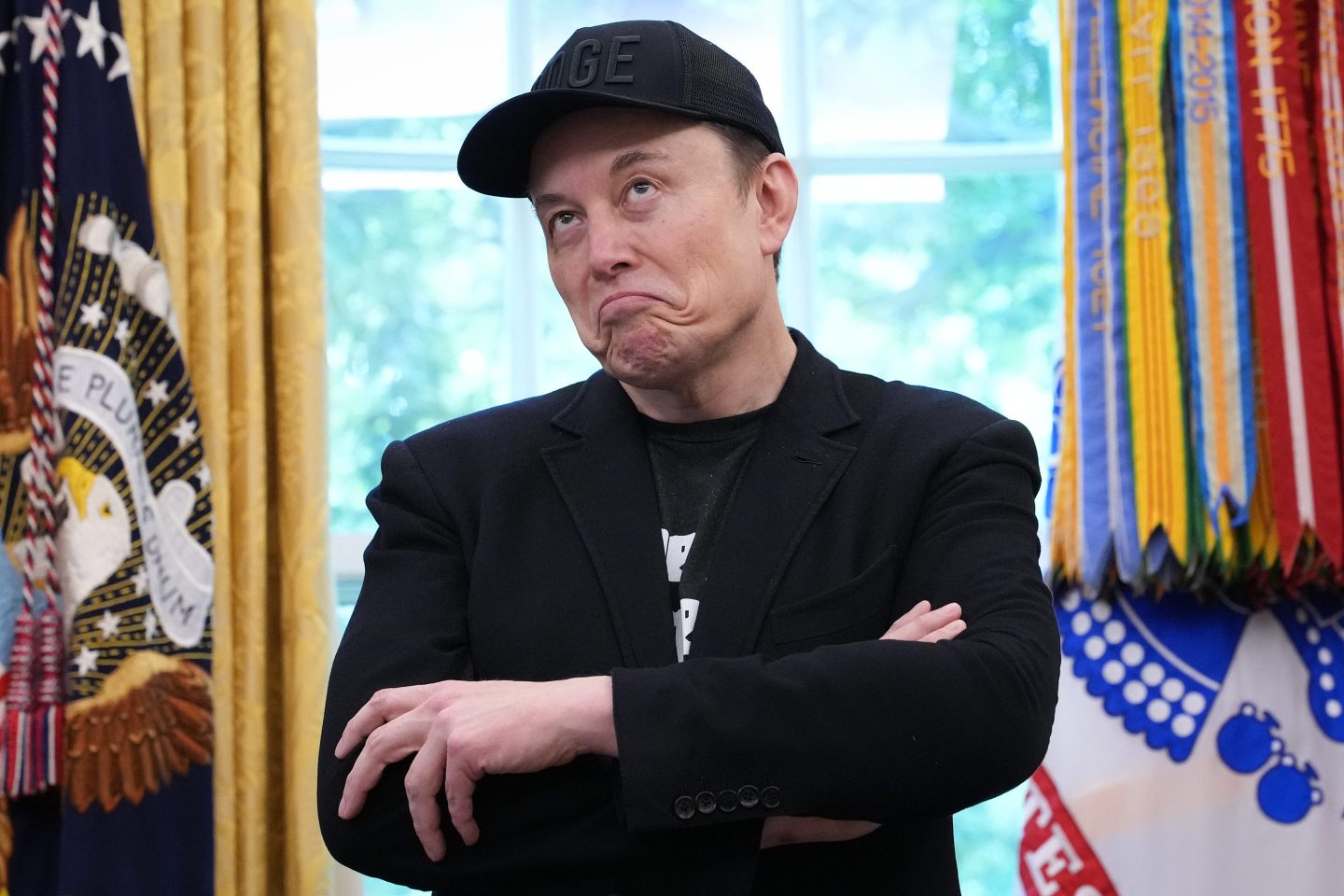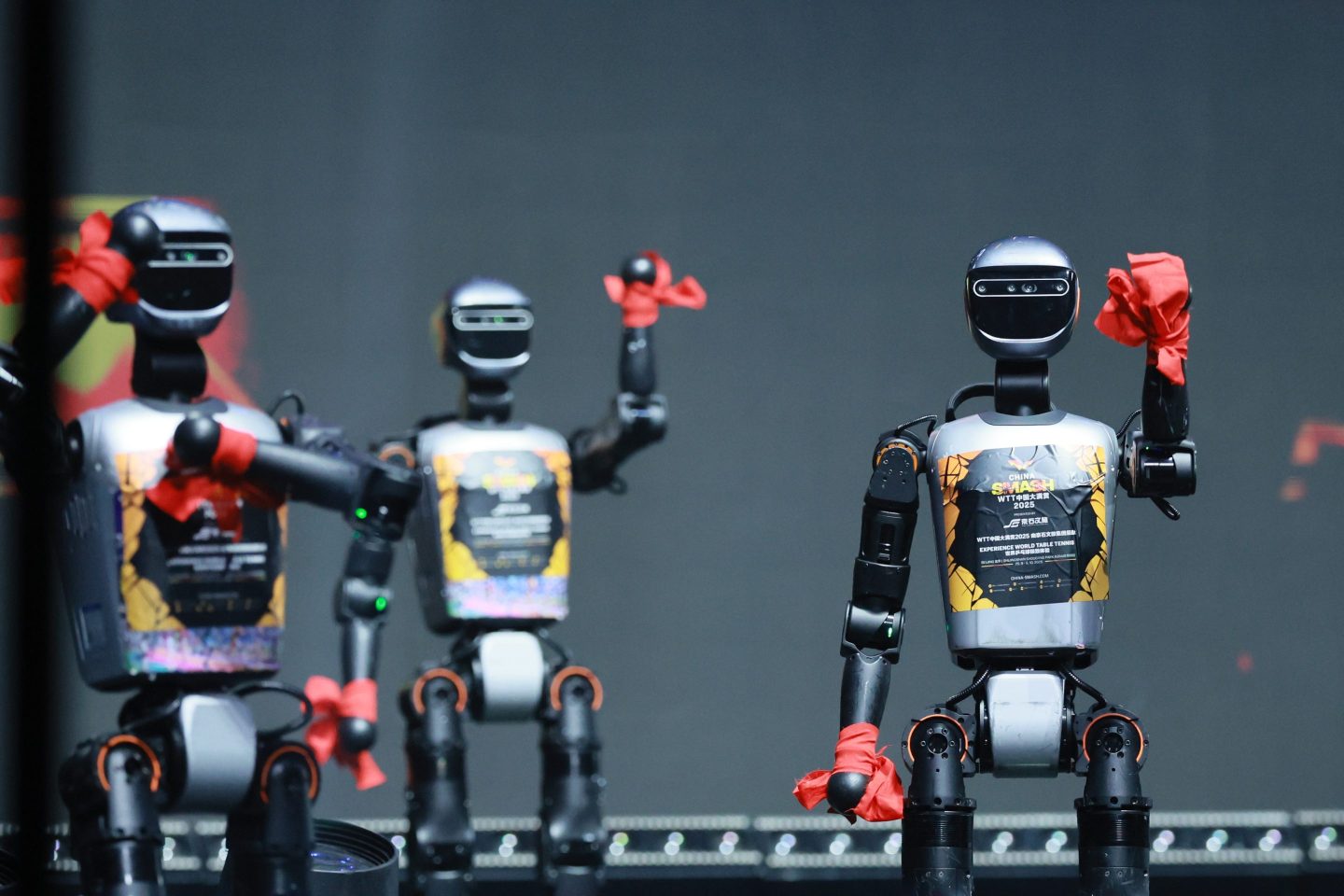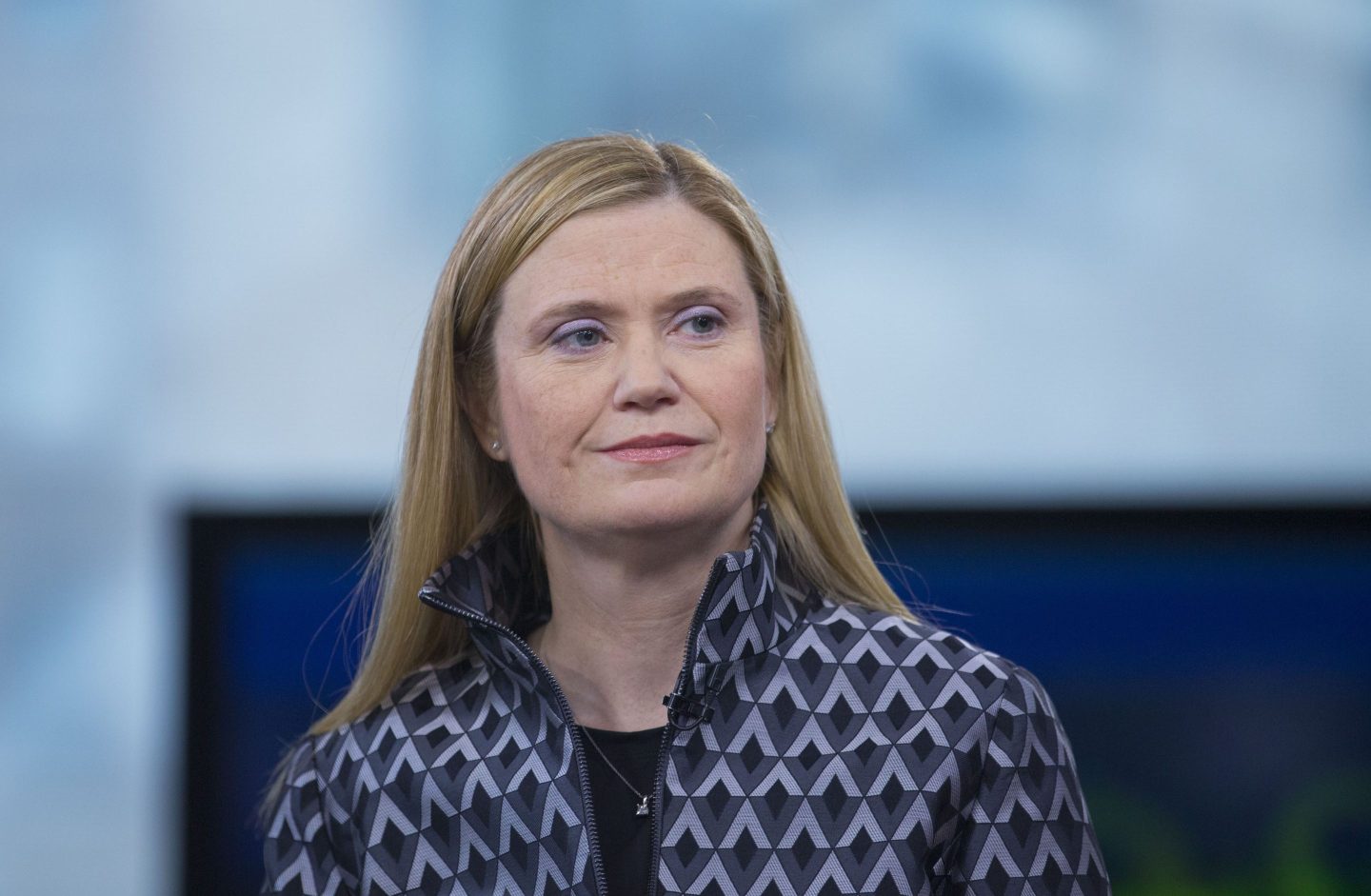Nvidia’s GTC shindig, which kicked off yesterday, is a developer conference. But this year’s edition is more than that—it’s also a way for Jensen Huang’s company to reassure investors that Nvidia’s explosive growth is sustainable.
And so, yesterday we didn’t just see Huang showing off Nvidia’s new Blackwell GPU, which is designed for “trillion-parameter scale” generative AI and is supposedly five times as fast as today’s H100 chips at performing genAI and twice as powerful at training. We also saw Nvidia significantly intensify its push into the robotics and automotive fields.
“Everything that moves in the future will be robotic,” the always leather-jacketed Huang enthused at the event, with robots flanking him on stage. Nvidia has been in the robotics game for a while—its Isaac platform for sticking AI into industrial robots has been available for more than five years. But now it’s launched a general-purpose foundation model called Gr00t, short for Generalist Robot 00 Technology, which is intended to power humanoid robots.
Project Gr00t involves upgrades to Isaac that help robots understand spoken commands and watch humans to learn how we move. Also, a bunch of new Isaac tools help robotics companies train their products and boost their dexterity and vision. Then there’s a new system-on-a-chip at the platform’s core, called Jetson Thor, which borrows its name from a mash-up of Hollywood IP (Huang also brought a couple of Star Wars droids on stage, which he said had been trained with Isaac).
An impressive array of robotics firms is lined up as Gr00t customers, including Boston Dynamics, Sanctuary AI, Xpeng Robotics, and Unitree Robotics. There’s no Tesla though—it looks like Nvidia and Elon Musk’s firm just became rivals on the robotic AI front.
Interestingly, Nvidia also yesterday became an inaugural platinum member of the new Open Source Robotics Alliance, alongside Qualcomm and Alphabet’s Intrinsic robotics unit. The alliance aims to support the development and governance of robot operating system projects.
Meanwhile, a bunch of Chinese automakers have also signed up to build the new Thor version of Nvidia’s Drive platform—using Blackwell architecture—into their vehicles. The biggest win there is BYD, the world’s leading EV company in number of cars sold. BYD will deploy Drive Thor in its cars, while also using Nvidia’s AI infrastructure for its production and retail operations.
GAC Aion’s luxury Hyper car brand is also adopting Drive Thor, as is Xpeng (again), Geely’s premium Zeekr brand, and Li Auto. Expect to see the results on roads next year. But as for Gr00t, it remains to be seen how far in the future Huang’s robots-everywhere vision actually lies.
It’s also worth noting that Nvidia has now started migrating its AI foundation models—previously available for free, as a way of getting developers to use its hardware—into its paid-for API catalog. That’s getting into the territory of competition with other models-as-a-service providers like Microsoft and Google, which are of course Nvidia’s own customers.
So are the markets impressed? Not really—Nvidia’s share price actually dropped 1.5% this morning, showing that investors had already priced Blackwell in and that Nvidia still needs to show how all this imminent expansion affects its bottom line. More news below.
David Meyer
Want to send thoughts or suggestions to Data Sheet? Drop a line here.
NEWSWORTHY
ByteDance boo-boo. The AI safety industry consortium at the U.S. National Institute of Standards and Technology has reportedly kicked a ByteDance researcher out of its Slack group for “violating the consortium's code of conduct on misrepresentation.” According to Reuters, TikTok-owner ByteDance is not a member of the group, and then there’s that whole controversy over its ties to Beijing. It seems a consortium member added the researcher to the group as a “volunteer.”
YouTube AI disclosures. YouTube has started requiring creators to flag their use of AI in creating realistic content, TechCrunch reports. The disclosures to users are supposed to counteract the risks of deepfakes, or alterations to real footage that could mislead people.
Nokia’s Reddit allegation. Nokia Technologies has accused Reddit of violating some of its patents, the about-to-IPO social network has disclosed. “As we face increasing competition and become increasingly high profile, the possibility of receiving more intellectual property claims against us grows,” Reddit said in a statement quoted by Reuters.
SIGNIFICANT FIGURES
€5.99 ($6.49)
—The reduced subscription price Meta proposes charging in Europe for ad-free Facebook and Instagram, rather than the €9.99 it currently charges. Meta’s proposal comes after privacy advocates complained that the company was making it harder to opt out of invasive tracking than to agree to it. However, those privacy advocates say any “pay or okay” fee, as they call it, is unacceptable.
IN CASE YOU MISSED IT
Reddit CEO Steve Huffman defends his $193 million compensation following backlash from unpaid moderators, by Orianna Rosa Royle
Software founder began lying to HP execs at the very first meeting—’The scene of an $11 billion fraud,’ prosecutors said, by the Associated Press
Musk says ‘trying to make everything a race issue is divisive and corrosive,’ days after settling a racial discrimination lawsuit at Tesla, by Sasha Rogelberg
Dell says remote workers must go hybrid if they want any hope of a promotion, by Paolo Confino
TikTok is in trouble in the U.S. and Europe–but American social apps could be next, by Olia Valigourskaia (Commentary)
BEFORE YOU GO
Geoengineering blow. Remember that Harvard plan to start testing the possibility of atmospheric geoengineering, as a means to combat climate change? You know, the kind of experiment the UN warned against, just over a year ago? Well, it’s not happening. As MIT Technology Review reports, the long-gestating Stratospheric Controlled Perturbation Experiment (SCoPEx) plan, which would have involved releasing sunlight-scattering aerosols at high altitudes, has now been abandoned following years of opposition that was based on concerns about uncontrollable consequences and just generally giving people the idea that it’s okay to keep pumping carbon into the atmosphere.
This is the web version of Data Sheet, a daily newsletter on the business of tech. Sign up to get it delivered free to your inbox.












